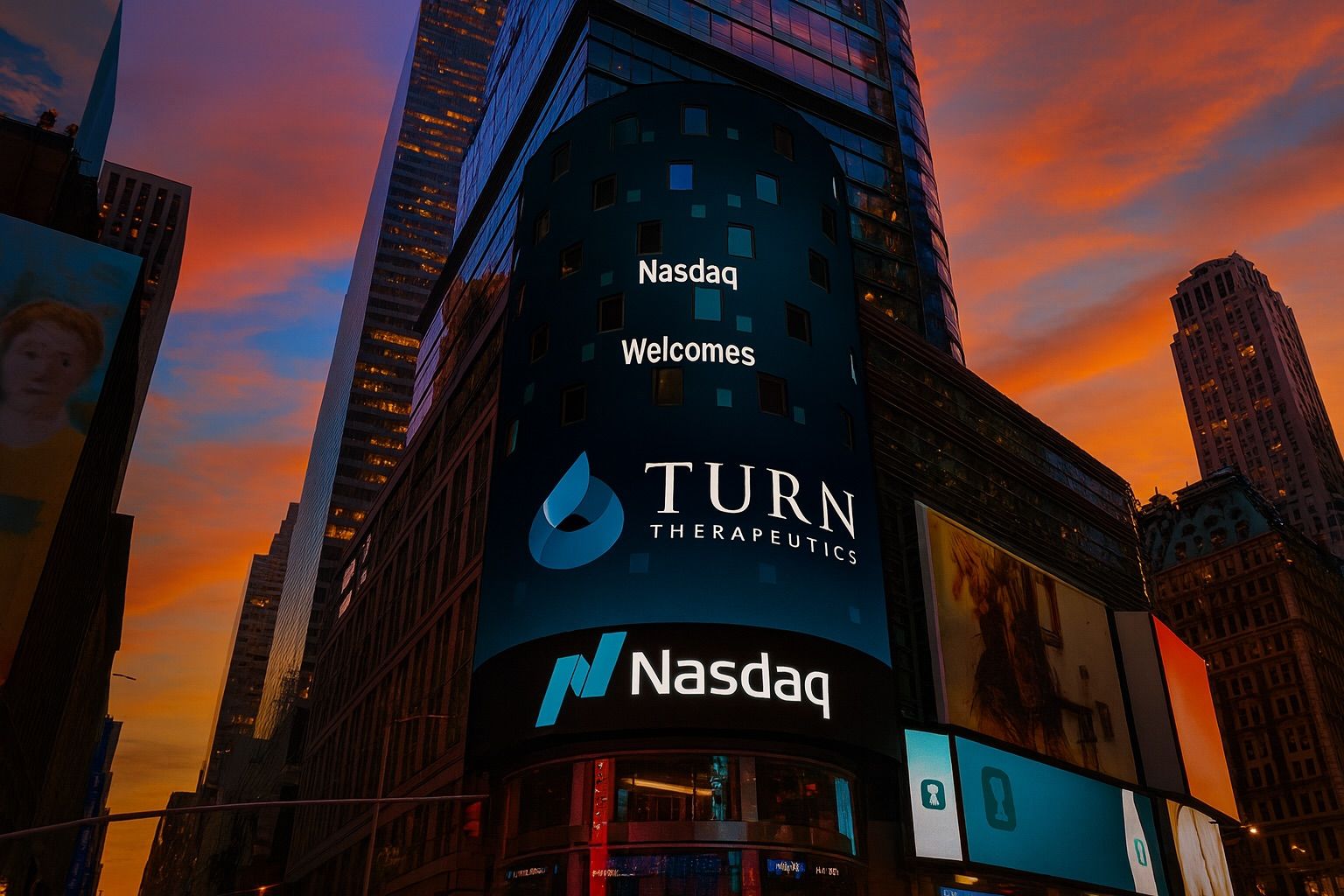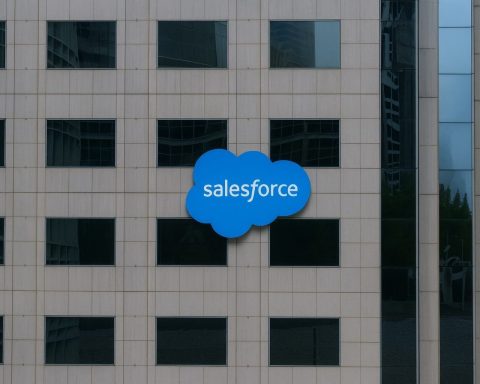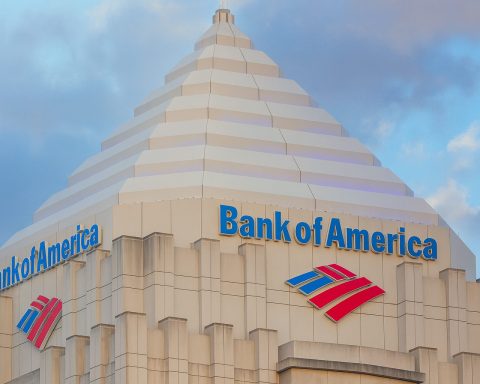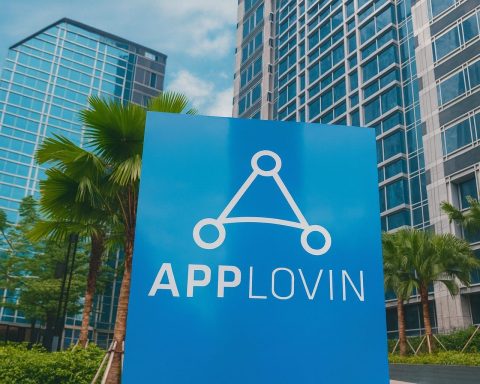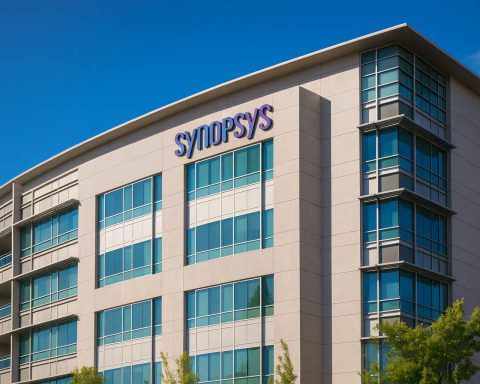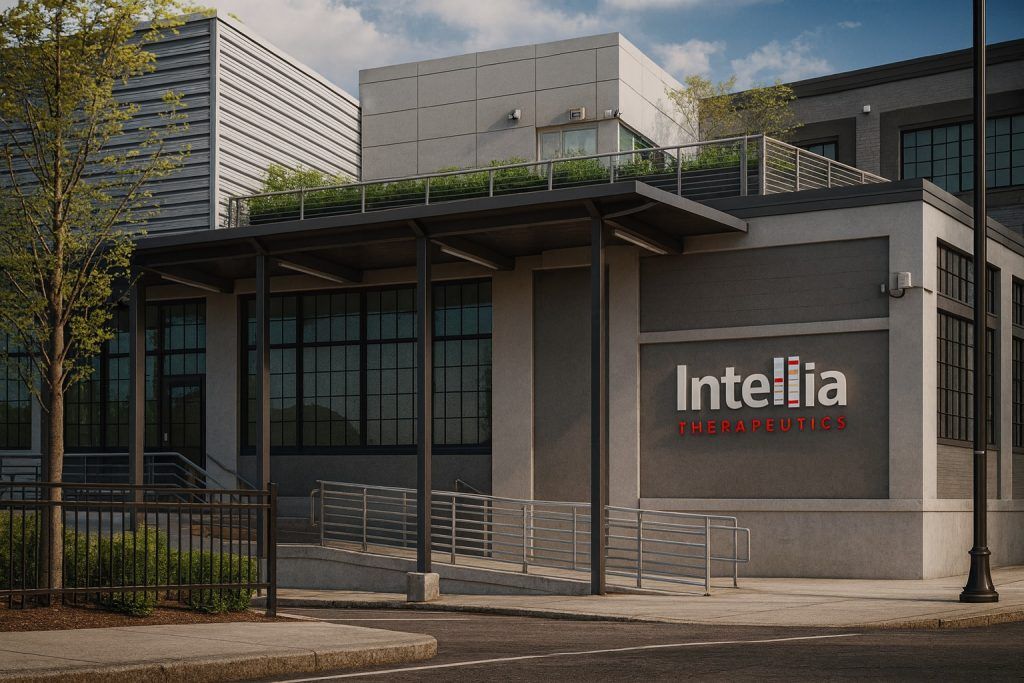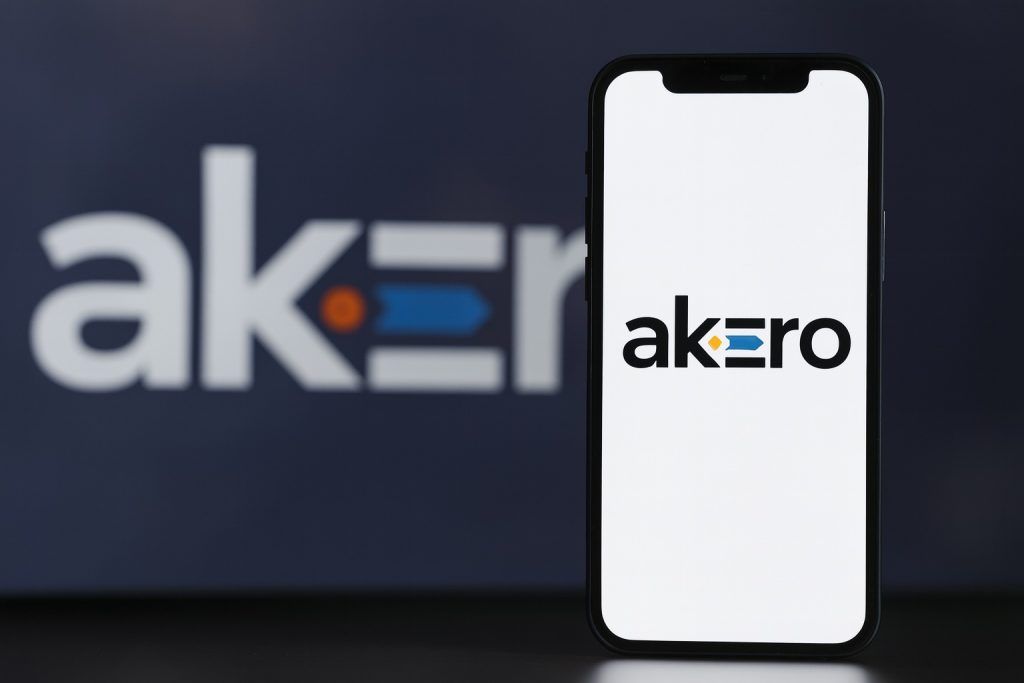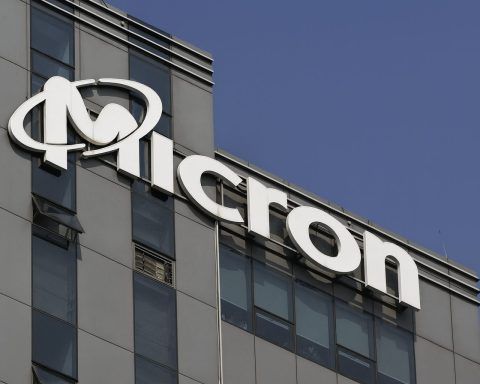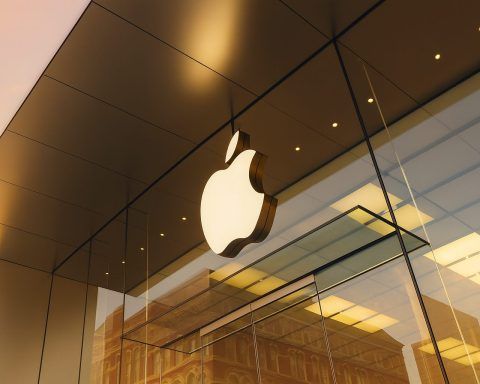- Stock Price (Oct 9, 2025): ~$23 per share (midday) after a massive post-listing surge [1]. The stock opened at $24.50 on Oct 9 and traded in a volatile range (~$19–$26 intraday) [2]. (Prior close on Oct 8 was $7.00 [3].)
- Market Cap: Roughly $500+ million post-surge (mid-hundreds of millions) [4], up from under $100 million at the prior day’s close. (Note: Share count estimates vary; ~14–28 million shares outstanding.) [5] [6]
- Sector/Industry: Healthcare – Biotechnology (Dermatology & Infectious Disease) [7] [8]. Operates as a clinical-stage pharma/medtech company focused on skin, wound, and eye disease treatments [9].
- Recent Performance: Wild volatility. Debuted on Nasdaq Oct 8, 2025 via direct listing (no IPO raise). The stock fell ~26% during its first regular trading session to $7 [10], then exploded 134% after-hours to $16.40 [11]. By Oct 9, shares were up over 200%+ from the debut, hitting new highs amid speculative trading.
- Trend: Short-term momentum is extremely high but driven by speculation rather than new fundamentals [12]. No major new FDA approvals were announced this week; the surge reflects investor enthusiasm in micro-cap biotech and a broader sector rally in early October [13].
Company Profile – Background & Leadership
Turn Therapeutics, Inc. is a Westlake Village, CA-based biotech company founded in 2015 [14]. The company (formerly named Global Health Solutions, Inc.) officially rebranded to Turn Therapeutics in Sept 2025 ahead of its Nasdaq listing [15]. Turn’s mission is to “turn the tides” in medicine by developing technologies that heal, not just manage, challenging traditional treatments [16]. CEO Bradley Burnam (the founder) leads a lean operation “built on a shoestring, with an absolute disdain for waste,” as he emphasized during the Nasdaq bell-ringing ceremony [17]. Burnam and his team bring a “patient-first” approach and a frugal business model to drug development, aiming to maximize R&D output per dollar. The executive leadership also includes CMO Neilesh Ghodadra and directors Abraham Chesed and Andrew Gengos [18] [19], who collectively have experience in dermatology, clinical research, and biotech management.
Business Model: Turn Therapeutics operates at the intersection of pharmaceuticals and medical devices [20]. Rather than relying on a single drug product, Turn built a proprietary technology platform called PermaFusion®, a patented mixing process that enables stable suspension of water-soluble drug ingredients in oil-based carriers without emulsifiers [21]. This formulation technology is the engine behind Turn’s product portfolio, allowing them to rapidly develop topical therapies with enhanced delivery into skin and nails. The company’s strategy has been to prove out this platform in real-world wound care products (generating safety data and some early revenue) while now pivoting to seek FDA drug approvals for new indications using the same core formulation [22]. Turn has kept operations capital-efficient (e.g. outsourcing or partnering for commercialization) and until now was privately financed (including crowdfunding efforts in its early years). The direct listing approach (vs. a traditional IPO) reflects management’s focus on existing shareholder liquidity and flexibility, rather than immediate capital raise – though future funding or partnerships may be needed as clinical trials progress.
Products & Pipeline
Turn Therapeutics’ pipeline and product portfolio center on its flagship topical formulation, known as GX-03(commercially branded “Hexagen” in wound care). Hexagen/GX-03 has achieved three FDA clearances to date for advanced wound and skin care uses [23]. These clearances were via the FDA’s device pathway (510k clearances), indicating the product’s safety and efficacy for certain non-systemic uses:
- Hexagen for Wound Care: An antimicrobial wound gel, cleared for management of acute and chronic wounds and burns (FDA 510k K160872) [24]. This formulation has been used over 200,000 times in patients, building a strong safety profile [25]. It was previously distributed by McKesson for wound care, validating its commercial potential [26]. In 2020, Turn combined Hexagen with a collagen powder (for burns/wounds) and licensed it to MiMedx, a major wound care company [27] – an early strategic partnership that brought the product to market through an established player.
- AtopX for Dermatology: A topical formulation of Hexagen (FDA clearance K171191) indicated for managing inflammatory skin conditions like dermatitis [28]. Essentially, this is Hexagen repurposed for dermatologic use (branded AtopX), highlighting the platform’s versatility.
- XEAL Antimicrobial Dressing: A sterile gauze dressing impregnated with Hexagen (clearance K183681) for wound care [29]. This ready-to-use dressing exemplifies Turn’s focus on practical, frontline treatmentsthat can be easily used in clinics or the field.
Having proven the formulation’s safety and anti-inflammatory properties in these applications, Turn is now advancing late-stage clinical programs to obtain full drug approvals for new indications [30]:
- GX-03 for Eczema (Atopic Dermatitis): Turn’s lead drug candidate is a topical IL-36/IL-31 cytokine inhibitor derived from Hexagen, aimed at moderate-to-severe eczema. A Phase 2 clinical trial launched in July 2025 [31], enrolling 114 patients to evaluate efficacy over 8 weeks of treatment [32]. This marks the first-ever topical IL-36 inhibitor in clinical trials [33]. Turn expects top-line results by end of 2025 [34]. If successful, this could fill a gap between mild steroid creams and expensive systemic drugs (like biologic injections) for eczema [35] [36]. CEO Burnam – an eczema patient himself – noted this program aims to “treat the source of eczema, rather than just manage symptoms” [37] by targeting root inflammatory pathways (IL-36 and IL-31, key drivers of inflammation and itching in dermatitis).
- GX-03 for Onychomycosis (Nail Fungus): Turn is also repurposing the Hexagen formulation for toenail fungus, a common and notoriously hard-to-treat condition. This program is slightly behind the eczema indication in development; it’s mentioned as a target for drug approval and likely in late preclinical or early clinical stage [38] [39]. A topical treatment that can penetrate nails and eradicate fungus would address a large market (millions of patients) currently served by oral drugs (with side effects) or less effective lacquers. Turn’s platform, which penetrates skin and nails while reducing microbial resistance [40], could give it an edge here.
- Thermostable Vaccine Platform: In addition to dermatology, Turn is pursuing a novel intranasal vaccine delivery initiative for global health. The company has an R&D program on thermostable vaccines – essentially vaccines that remain stable at higher temperatures, critical for use in under-resourced regions. Turn announced an intranasal vaccine candidate with extended stability (suggesting it could avoid cold-chain requirements) [41]. This program is still in preclinical stages, but it underscores Turn’s broader vision beyond dermatology. It aligns with their public health focus, though it is likely a longer-term and higher-risk project (and not the current driver of stock performance).
Pipeline Outlook: Turn’s near-term value hinges on its dermatology programs, especially the eczema trial. If the Phase 2 data (expected late 2025) are positive, it could be a game-changer validating the platform for inflammatory diseases. That would set the stage for Phase 3 trials or possibly partnership opportunities with larger pharma companies specializing in dermatology. Conversely, any disappointment in trial results would hurt confidence in the pipeline’s efficacy. At present, no revenue is coming from product sales (Hexagen’s prior sales were modest and/or via partners), so Turn remains pre-revenue with a net loss (about $2–3M annual loss) [42]. This means future prospects rely entirely on R&D success and eventual commercialization.
Current & Historical Stock Performance
Trading Debut: Turn Therapeutics began trading on the Nasdaq Capital Market on October 8, 2025 under ticker TTRX [43]. The listing was done through a direct listing rather than an IPO, with existing shareholders registering ~8.9 million shares for sale [44] [45]. No new shares were issued or capital raised, and there was no set IPO price – the market determined the initial value. The first day was roller-coaster: TTRX opened around the $9–$10 range (unconfirmed exact opening price) and sold off by 26% during regular hours to close at $7.00 [46]. This steep first-day drop left the company’s market cap under $100 million (a typical outcome for some direct listings where initial liquidity is low and early sellers dominate).
After-Hours Explosion: However, after the closing bell on Oct 8, trading mania gripped TTRX. In post-market trading, the stock suddenly surged 134.29% – rocketing from $7 to $16.40 by the end of the after-hours session [47]. This move, which more than doubled the stock price in hours, put Turn Therapeutics on the map as one of the day’s top gainers. Nasdaq’s market news highlighted TTRX “leading the charge” in an after-hours biotech rally [48]. Notably, Turn’s debut coincided with a broader speculative surge in small biotech stocks: other micro-cap biotechs (unrelated to Turn) also spiked that evening despite no news – e.g. Adaptimmune (ADAP) jumped ~52% on Oct 8 purely on trader speculation [49]. This context suggests that momentum traders pounced on TTRX, possibly attracted by its low float and fresh story, causing a sharp squeeze upward. The Nasdaq Exchange’s social media even welcomed Turn as a company “paving the way in pharmaceutical technologies that heal, not just manage”, signaling enthusiasm for its mission [50].
Oct 9 and Beyond: The frenzy carried into the next trading day (Oct 9). Turn’s stock opened at $24.50 on the morning of Oct 9 [51]— a stunning 250%+ above the prior day’s close. In early trading it hit an intraday high around $26 [52] (up ~271%), before pulling back toward ~$19–$23. By midday Oct 9, TTRX was hovering around $23 (+228% on the day) [53], on extremely high volume for a tiny float. At that price, even using conservative share counts, the company’s market cap had swelled to an estimated $300–$500 million range (a multi-fold increase in 24 hours). Chart-wise, the stock’s short trading history shows virtually a straight line up after the debut dip.
For historical context, Turn’s public trading history is essentially two days old, so “historical performance” is limited to this debut volatility. Longer-term investors might look at how similar small biotech listings performed: often there is initial volatility and price discovery in the first weeks. It is not uncommon for direct-listing stocks to be erratic at the start as the market finds a fair price. In this case, TTRX’s whipsaw from $10 -> $7 -> $16+ -> $24+ suggests the market initially undervalued the stock (or simply that speculative forces overshot on the upside afterward). No earnings data or fundamentals have been reported yet to anchor the valuation; the moves are trading-driven.
Relative Sector Performance: The biotech sector (especially small-cap biotech) has been showing signs of risk-on behavior in late 2025, with indexes rebounding and traders chasing high-risk names. Turn’s explosion is reminiscent of meme-stock like moves, albeit within biotech. It far outperformed any biotech index in those days. For instance, the NASDAQ Biotechnology Index was relatively flat, highlighting that Turn’s surge is idiosyncratic. Investors should note that such outsized moves can reverse just as quickly – a fact seen often in penny biotech stocks that spike on hype.
Expert Opinions & Analyst Commentary
Because Turn Therapeutics just listed, formal analyst coverage is scant. As of Oct 9, no major Wall Street firm has issued research or price targets (and sites like Simply Wall St note “insufficient analyst coverage” for forecasts [54]). However, several market observers and industry commentators have weighed in on TTRX’s early action and prospects:
- Nasdaq/RTT News: In a market recap, RTT News highlighted Turn Therapeutics’ after-hours spike as emblematic of a broader biotech rally, but without any specific catalyst from the company. They noted “multiple names hitting fresh highs… biotech continues to offer fertile ground for after-hours volatility”, implying Turn’s surge was part of a speculative wave [55] [56]. In other words, the stock’s move was more about market sentiment than a sudden change in Turn’s fundamentals.
- Benzinga – Mohd Haider: A Benzinga report on Oct 9 called attention to the Nasdaq listing debut and the subsequent 134% jump [57] [58]. It quoted the CEO Bradley Burnam from the Nasdaq ceremony: “[This company was] built on a shoestring, with an absolute disdain for waste,” underscoring Turn’s lean model [59]. The report also mentioned Nasdaq’s welcome message praising Turn’s mission to heal rather than just manage disease [60]. Benzinga’s take noted that during regular trading the stock actually fell, and it pointed out that Benzinga’s analytics rated TTRX’s short-term trend as negative prior to the after-hours spike [61]. This suggests caution – the initial drop could imply some investors were bearish or taking profit early, before the surprise swing up.
- Stocktwits/Trading Forums: The retail trading community lit up with discussions as TTRX appeared on top-gainers lists. A popular Stocktwits post asked “Why is Turn Therapeutics stock soaring over 370% premarket?” [62], reflecting the confusion and frenzy (the 370% figure likely sums the after-hours + premarket jump from $7 to around $33 at one point). Many commentators attributed the move to the stock’s low float and the buzz around Turn’s eczema trial (some traders speculated that the eczema drug could be a future blockbuster, drawing parallels to other dermatology success stories). However, seasoned biotech investors on forums warned that no new FDA approvals or deals had been announced – i.e. “this is trading on air right now.” The consensus in these discussions is that TTRX could be a high-risk, short-term trade until real news (like trial results) gives it direction.
- Sector Analysts: While not commenting on Turn specifically, biotech analysts have noted a trend of micro-cap biotechs spiking on hope in 2025’s market. The scenario with Turn is reminiscent of other cases where thinly traded biotech stocks skyrocketed on retail enthusiasm. As an example, analysts cited Adaptimmune (ADAP) – which jumped over 50% the same day – saying such moves were “driven by speculative trading rather than any new breakthrough” [63]. This kind of expert commentary serves as a caution that Turn’s valuation may not be justified by its current achievements (yet), but rather by optimism for the future. No doubt, as Turn progresses, analysts from biotech-specialized research firms will initiate coverage. Investors will be watching for any initiations or ratings in coming weeks; positive analyst commentary could lend credibility, while skeptical notes could temper the hype.
- Company and Nasdaq Officials: Nasdaq’s official channels gave Turn a warm welcome, indicating industry optimism. At the closing bell ceremony on Oct 8, Turn’s team celebrated the listing in New York, signaling confidence in the public markets. CEO Burnam’s remarks (noted above) and his presence at the bell are used by some experts as a sign that Turn wanted to signal its story to investors early. The fact that Turn went the direct listing route (with Clear Street LLC as financial advisor [64], rather than big-bank underwriters) was also commented on – it’s seen as atypical for a biotech, and some finance experts suggested it implies management’s strong belief in the company’s value (choosing not to dilute at a low IPO price). However, others note it also means Turn did not raise cash, which brings us to the next point – its financial future.
Recent News & Developments (Early October 2025)
The first week of October 2025 has been eventful for Turn Therapeutics:
- Nasdaq Listing & Bell Ringing (Oct 8, 2025): Turn’s common stock commenced trading on Oct 8 on Nasdaq Capital Market [65]. The company’s S-1 registration had been declared effective on Sept 30 [66]. On listing day, Turn’s leadership participated in the Closing Bell Ceremony at Nasdaq MarketSite in Times Square [67]. This moment, captured on financial news, introduced Turn to public investors. There was no traditional IPO pricing or roadshow, since it was a direct listing, but Turn did host an Open Investor Session on Sept 17 to pitch its story to potential investors ahead of listing [68]. The successful Nasdaq debut (in terms of getting listed) is itself a key milestone, as many biotech startups never reach the public markets.
- After-Hours Stock Surge (Oct 8-9, 2025): As detailed above, the big news was TTRX’s 134% after-hours spikeand continued rally into Oct 9 [69]. This caught headlines on financial media. Nasdaq.com, Benzinga, Yahoo Finance, and others all ran pieces highlighting the remarkable jump [70] [71]. For example, a Nasdaq news article titled “After-Hours Surge: Turn Therapeutics Rockets 134% Post-Close on Nasdaq Debut”spread rapidly [72]. Such attention can be a double-edged sword: it increases awareness of the company (possibly drawing in new investors), but also flags it as a high-volatility play.
- No New FDA Approvals (Oct 5–9, 2025): Importantly, Turn did not announce any new FDA approvals or trial results in the days surrounding the listing. The last FDA-related update from the company was historical – noting its three prior FDA clearances for its wound care products [73]. These were already in hand before going public. Some traders initially speculated if an FDA decision news had leaked (given the stock’s move), but that was not the case. Turn’s eczema trial is ongoing (with results expected end of year) [74], and no FDA filing is imminent. Investors should not confuse the FDA “clearances” (510k device clearances), which Turn already has, with a new FDA drug approval, which would likely be a year or more away if trials succeed.
- Strategic Partnerships & Investor Activity: No brand-new partnerships were announced around Oct 9. However, Turn’s existing partnership with MiMedx (from 2020) was noted in Renaissance Capital’s IPO briefing – this was the deal where MiMedx licensed Turn’s collagen/Hexagen wound product [75]. In the absence of new deals, some analysts speculate that if Turn’s eczema data is positive, a future partnership with a larger dermatology player (or even an acquisition) could be on the table, given big pharma’s interest in eczema treatments. As for investor activity, since this was not an IPO, we don’t have a roster of new institutional buyers. The selling shareholders in the direct listing were presumably early investors or insiders – their identities aren’t fully public, but any significant holder (5%+) will have to file disclosures. It will be interesting to see 13D/13G filings in coming weeks revealing who owns big stakes in Turn. The trading volumes (~12 million shares traded by Oct 9 morning [76]) suggest many of the 8.9 million registered shares may have changed hands already, meaning the shareholder base could be shifting to more retail investors and fast-money traders. One noteworthy investor-related event: Turn’s crowdfunding past – it had a Reg CF raise on StartEngine a few years ago [77]. Some of those early crowdfunding investors may now be cashing in via the public market (the StartEngine page noted Hexagen’s clearances and potential, attracting thousands of small investors). The listing essentially provided liquidity for those believers.
- Industry News (Early Oct 2025): On a macro level, early October saw generally positive sentiment in biotech. There was buzz about other companies: e.g., Sarepta Therapeutics got an FDA nod, Novo Nordisk made a big acquisition in NASH (fatty liver disease), and Adaptimmune sold assets to survive [78]. None of these directly involve Turn, but they frame the environment – big players advancing, and small players swinging wildly on speculation (as we saw). Another news angle: the “Ozempic effect” on healthcare stocks was a talking point (drugs like Novo’s Ozempic impacting various sectors), but Turn’s focus is dermatology, so it’s somewhat insulated from those macro trends. Additionally, October 2025 saw strong overall market conditions (stock indices near record highs [79]), which helps riskier stocks like TTRX find willing buyers. Had the market been in a downturn, Turn’s debut might not have seen such exuberance.
- ts2.tech Articles: Tech Space 2.0 (ts2.tech), a tech and finance news site, has been covering the biotech stock rollercoasters of 2025. While as of Oct 9 they haven’t published a dedicated Turn Therapeutics article, they did highlight the speculative surges in the sector. For instance, ts2.tech noted Adaptimmune’s wild 2025 ride and how its spike was likely a speculative “surge or true biotech comeback?” piece, implicitly raising the same question for peers like Turn [80]. We anticipate that sites like ts2.tech and others will soon analyze TTRX’s surge in a similar vein – is it hype-fueled or grounded in genuine promise? Any ts2.tech coverage would likely echo the need for caution given the lack of new data, while acknowledging the excitement around Turn’s technology.
In summary, recent news is dominated by the listing and stock action. Turn has successfully captured market attention; the key now is delivering real progress (clinical results, partnerships, etc.) to justify its swelling market value.
Stock Forecast and Future Outlook
Looking ahead, what’s next for Turn Therapeutics (TTRX) and its investors? The outlook is a mix of significant upside potential tempered by major uncertainties. Here are the key factors shaping the future forecast:
- Fundamentals & Catalysts: The single most important fundamental catalyst on the horizon is the Phase 2 eczema trial readout (due late 2025) [81]. This event could be a make-or-break moment. Bull case: If the trial shows that Turn’s topical GX-03 significantly improves eczema (e.g. strong reductions in EASI scores vs placebo) [82], it would validate Turn’s science and open a clear path to Phase 3 and eventual FDA approval. Such a result could skyrocket the stock further, as eczema is a multi-billion dollar market – even a small slice could mean huge revenues. Turn might also become a takeover target if the data is outstanding (larger pharma might swoop in). Bear case: If the trial fails to meet endpoints or has safety issues, TTRX stock could crash, as the company’s flagship program would be in doubt. Aside from eczema, any progress in the onychomycosis program (e.g. starting a trial, early results) in 2026 could add value, though that’s a bit further out. On the vaccine front, developments there are longer-term; positive news (such as preclinical breakthroughs or partnerships with global health organizations) would be a nice surprise but aren’t expected near-term.
- Market Conditions: The broader biotech market environment will influence Turn’s stock trajectory. In 2025, investors have been rotating into biotech due to some high-profile drug successes and M&A (mergers & acquisitions) activity. Low interest rates (assuming the 2025 macro environment as given) also make speculative growth stocks more attractive. If this favorable sentiment continues, Turn could benefit from a rising tide. On the flip side, any reversal in market risk appetite – for example, if macroeconomic or geopolitical events make investors flee to safety – could severely impact volatile stocks like TTRX. Biotech is known for boom-bust cycles; Turn’s 200% surge could invite a pullback if the overall market stumbles or if traders move to the “next hot thing.”
- Valuation & Financials: At a few hundred million dollars market cap, Turn is now valued richly for a pre-revenue biotech. Investors are basically pricing in future success. Compare this to peers: a successful Phase 2 dermatology biotech might often be valued in the low hundreds of millions, so the market is in that ballpark assuming success. If Turn’s trial succeeds, one could argue the stock has more room to run – possibly into the billion+ valuation if a Phase 3 is on the horizon and big pharma interest emerges. If the trial fails, fair value could be closer to cash on hand (which isn’t publicly known yet, but likely <$20M, meaning the stock would sink dramatically). In absence of news, the stock may trade on technicals and momentum. Some traders might attempt to “ride the wave” up or down. Forecast scenario: Many analysts would likely take a “wait-and-see” stance until the eczema data. In practical terms, that could mean the stock oscillates in a range (perhaps still above its $7 debut, but below the peak $20s) as the hype settles, unless new information arises.
- Investor Sentiment: Turn has quickly become a talking point on biotech forums and among speculative traders (as noted). This sentiment-driven aspect means short-term forecasts are tricky – the stock could overshoot dramatically (some social media chatter has set wildly high short-term “targets” in the $30–$40+ range purely based on momentum). If momentum traders continue to rally behind TTRX, it’s possible the stock sees another leg up in the near term. However, these moves are inherently unstable. Conversely, any indication that early investors are selling heavily (since it was a direct listing, insiders could be offloading shares) could scare off the momentum crowd. Savvy biotech investors will also be gauging how much cash the company has and whether a secondary offering might be coming – since Turn raised no money in the listing, it’s reasonable to expect they may sell new shares later to fund trials. The prospect of dilution could cap the stock’s upside until more is known.
- Comparable Companies: In forecasting TTRX, one might look at comparable small-cap biotech stocks that had successful dermatology drugs. For instance, Dermira (acquired by Eli Lilly) had a topical for acne and atopic dermatitis – its trajectory showed big spikes on trial data and partnerships, but also crashes on trial failures. Another comp is AnaptysBio, which targeted IL-36 for psoriasis (systemically); its results impacted its stock. Turn’s topical approach is unique, but not without competition (big companies like LEO Pharma, Novartis, and others have interest in topical eczema therapies). If Turn’s approach is genuinely effective and safe, the outlook could be very bright – it addresses unmet needs (a steroid-free, non-injectable eczema treatment). But until proof arrives, the stock’s future will be volatile.
In summary, the future outlook for Turn Therapeutics is high-risk, high-reward. Optimistic scenarios (positive trial results, potential FDA fast-track, partnerships) could see the stock multiply further and graduate from micro-cap status. Pessimistic scenarios (clinical setbacks, cash crunch) could see it fade back to penny-stock levels. At this juncture (Oct 9, 2025), the best we can say is that all eyes are on the upcoming eczema trial data – that will likely dictate whether Turn is a long-term biotech success story or a short-lived trading phenomenon. Until then, expect continued volatility. Investors and analysts will be closely watching any interim updates from the company for clues.
Risks and Challenges
Investing in Turn Therapeutics comes with a host of risks and challenges, characteristic of early-stage biotech ventures:
- Clinical Development Risk: Turn is still in clinical-stage development for its key programs. There is no guarantee that its drug candidates will prove effective or safe in trials. The ongoing eczema trial could fail to meet endpoints or expose unforeseen side effects. Any such failure would likely cause a sharp decline in the stock. Even with positive Phase 2 data, larger Phase 3 trials would be needed for FDA approval, each carrying risk. The history of drug development is full of promising mechanisms that stumbled in late trials. Turn’s IL-36/IL-31 inhibitor approach, while scientifically sound, is unproven in practice – it’s the first topical of its kind [83], so there’s no precedent to assure success.
- Regulatory Hurdles: Gaining FDA approval for eczema or onychomycosis will be challenging. Eczema, in particular, is a crowded field – while Turn’s topical would be novel, regulators will scrutinize it against the high bar set by existing treatments (e.g. Dupixent, a highly effective injectable for moderate-to-severe atopic dermatitis). If the trial results are only modestly effective, the FDA might require additional studies or might not grant approval if the benefit-risk isn’t clear. Onychomycosis trials can also be tricky (they often require long study durations to see clear nail regrowth results). Turn’s prior FDA interactions have been on the device side (clearances for topical use in wounds), which are generally easier and shorter processes than drug approvals. Transitioning to the drug approval pathway means more stringent requirements and possibly a need for specialized regulatory expertise.
- Financial and Dilution Risk: As of the listing, Turn did not raise fresh capital. The company’s cash reserves are not publicly detailed, but given it was a private startup, it likely has limited funds (perhaps raised through venture rounds and a crowdfunding). Developing drugs is extremely costly – Phase 2 and 3 trials can run tens of millions of dollars. Without a cash infusion, Turn could face a cash crunch in 2026. Management will almost certainly need to secure additional funding, whether through issuing new shares (dilution), debt, or partnering deals. Any announcement of a large share offering could depress the stock price. The direct listing strategy means the company must now tap the market in a secondary offering if it wants funds. This overhang is a risk for current investors; they could see their ownership diluted at a lower price if the stock can’t sustain current levels by the time of a raise.
- Market Volatility & Valuation: The current stock price is momentum-driven and could be very volatile. Sudden drops are a real risk – just as it spiked 100%+, it could just as easily plunge if sentiment turns. Early investors or insiders might take profit after the lock-up (if any) or as soon as they’re able, flooding the market with shares. New investors buying in at $20+ could get burned if the stock retraces to single digits (which is not uncommon for small biotechs after initial hype). The valuation at several hundred million dollars assumes future success; if any doubts arise, the market could rapidly “re-rate” the company downward. Short sellers may also target TTRX due to its sharp rise and lack of fundamentals, which could add to volatility.
- Competition and Market Adoption: Even in a success case, Turn would face competition. For eczema, big pharma companies have systemic drugs (biologics like Dupixent and JAK inhibitors) that are very effective; several other companies are developing topical treatments too. Turn’s product, if approved, would need to carve out a niche (perhaps for patients who don’t want injections or can’t use steroids). Commercializing in dermatology often requires a strong sales force and marketing – something Turn, as a small company, doesn’t have. They might need to partner or license out the product for marketing, which could eat into future profits. For onychomycosis, oral antifungals (like terbinafine) are cheap and reasonably effective, so a new topical must show clear advantages. Insurance coverage could be another challenge – if Turn’s therapy is expensive, payers might be hesitant without robust evidence. All this means that even after potential FDA approval, business execution risk remains: turning a good drug into a profitable product is not trivial.
- Intellectual Property and Technology Risk: Turn’s PermaFusion platform is patented [84], but larger competitors may find workarounds or alternative formulations. If a bigger company came up with a similar technology, Turn’s edge could be diminished. Also, as a small company, defending patents or navigating IP challenges is a burden. There’s also the question of scalability – can Turn manufacture its products at scale with consistent quality? Any hiccups in production or supply (especially for something like an intranasal vaccine, if that project advances) could delay progress.
- General Biotech Sector Risks: External factors like regulatory changes, shifts in FDA stance, or changes in healthcare policy can affect all biotechs. For example, if drug price controls become stricter, investor appetite for small biotechs can wane. Macro factors such as interest rate changes can particularly hit pre-revenue biotechs (which rely on future cash flows). Additionally, in the current environment, many biotechs are competing for a limited pool of investor capital – if sentiment swings to favor AI or other sectors, biotech stocks can underperform. Turn is not immune to these sector-wide swings.
In essence, investors should approach TTRX with caution. The company faces the classic uphill battle of proving its science and then commercializing it, all under the pressures of the public market. The recent stock fireworks underscore that this is a highly speculative stock. Prospective investors are advised to size positions appropriately (or be prepared for the possibility of losing a significant portion of the investment if things go wrong). As one analyst put it in context of similar cases: these stories can be “binary bets” [85] – either the company will achieve a breakthrough (and reward shareholders handsomely) or it will stumble and struggle. Turn Therapeutics has exciting technology and a noble mission, but it must navigate a minefield of risks on the road ahead.
Conclusion: Turn Therapeutics (TTRX) has captured the market’s imagination with its dramatic entry and vision of revolutionizing dermatology and wound care. The stock’s soaring debut (200%+ gains) [86] reflects optimism around its platform and pipeline. Key facts like a ~$23 price and ~$300–$500M valuation as of Oct 9, 2025 illustrate how quickly sentiment can elevate a biotech newcomer [87] [88]. Moving forward, the company’s real test will be delivering clinical results and ultimately FDA approvals to justify the hype. Investors are watching closely – this could be a groundbreaking biotech success in the making, or just as easily, a cautionary tale of speculation. In the meantime, Turn Therapeutics stands as one of 2025’s most intriguing biotech stock stories, with high stakes for both patients and shareholders.
Sources: Turn Therapeutics press releases [89] [90]; Nasdaq/RTT News [91]; Benzinga [92] [93]; Reuters Company Profile [94] [95]; Renaissance Capital IPO brief [96] [97]; Stock analysis data [98]; ts2.tech biotech commentary [99]; Adaptimmune example (ts2.tech) [100].
References
1. www.reuters.com, 2. www.reuters.com, 3. www.benzinga.com, 4. finviz.com, 5. finviz.com, 6. stockanalysis.com, 7. www.businesswire.com, 8. stockanalysis.com, 9. stockanalysis.com, 10. www.benzinga.com, 11. www.nasdaq.com, 12. ts2.tech, 13. www.nasdaq.com, 14. www.renaissancecapital.com, 15. stockanalysis.com, 16. www.benzinga.com, 17. www.benzinga.com, 18. www.reuters.com, 19. www.reuters.com, 20. www.reuters.com, 21. www.reuters.com, 22. www.businesswire.com, 23. www.businesswire.com, 24. www.reuters.com, 25. www.businesswire.com, 26. www.renaissancecapital.com, 27. www.renaissancecapital.com, 28. www.reuters.com, 29. www.reuters.com, 30. www.businesswire.com, 31. www.businesswire.com, 32. www.businesswire.com, 33. www.businesswire.com, 34. www.businesswire.com, 35. www.businesswire.com, 36. www.businesswire.com, 37. www.businesswire.com, 38. www.businesswire.com, 39. www.businesswire.com, 40. stockanalysis.com, 41. www.businesswire.com, 42. finviz.com, 43. turntherapeutics.com, 44. www.renaissancecapital.com, 45. www.renaissancecapital.com, 46. www.benzinga.com, 47. www.nasdaq.com, 48. www.nasdaq.com, 49. ts2.tech, 50. www.benzinga.com, 51. www.reuters.com, 52. www.reuters.com, 53. www.reuters.com, 54. simplywall.st, 55. www.nasdaq.com, 56. www.nasdaq.com, 57. www.benzinga.com, 58. www.benzinga.com, 59. www.benzinga.com, 60. www.benzinga.com, 61. www.benzinga.com, 62. stocktwits.com, 63. ts2.tech, 64. www.benzinga.com, 65. turntherapeutics.com, 66. turntherapeutics.com, 67. turntherapeutics.com, 68. www.businesswire.com, 69. www.nasdaq.com, 70. www.benzinga.com, 71. www.nasdaq.com, 72. www.nasdaq.com, 73. turntherapeutics.com, 74. www.businesswire.com, 75. www.renaissancecapital.com, 76. finviz.com, 77. www.startengine.com, 78. ts2.tech, 79. ts2.tech, 80. ts2.tech, 81. www.businesswire.com, 82. www.businesswire.com, 83. www.businesswire.com, 84. www.reuters.com, 85. ts2.tech, 86. www.nasdaq.com, 87. www.reuters.com, 88. finviz.com, 89. www.businesswire.com, 90. www.businesswire.com, 91. www.nasdaq.com, 92. www.benzinga.com, 93. www.benzinga.com, 94. www.reuters.com, 95. www.reuters.com, 96. www.renaissancecapital.com, 97. www.renaissancecapital.com, 98. finviz.com, 99. ts2.tech, 100. ts2.tech
